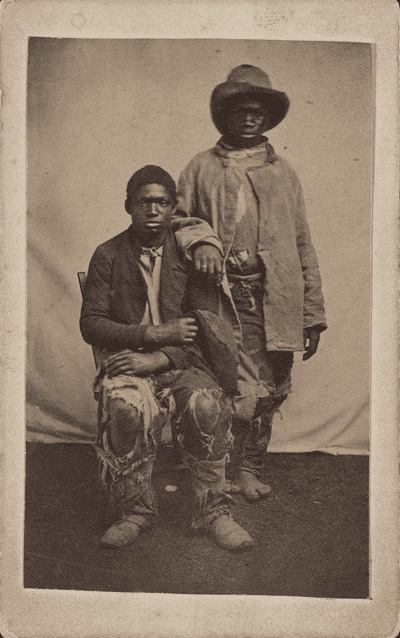Howard Fischer
Uppsala, Sweden
“Slavery is next to hell.” – Harriet Tubman
“And before I’d be a slave,
I’ll be buried in my grave…”
– Oh, Freedom, African-American spiritual

Slavery arrived in what later became the United States in 1619. Slaves were used mainly as agricultural laborers. In the US South, that meant working with tobacco and cotton crops. The invention of the cotton gin in 1794 made the separation of the cotton boll from the seeds easier and faster. Because more cotton could be processed and grown, more African slaves were needed. Before emancipation in 1863, there were four million slaves in the US. One-third of Southern families owned slaves. The importation of slaves was made illegal in 1808, but this law was often circumvented.1
“Drapetomania” was a term coined by Samuel Cartwright, MD (1793–1863), from the Greek drapetes, a runaway, and mania, madness. He defined it as a “mental illness” that caused African slaves in the US to flee their captivity.2 Psychiatrist Thomas Szasz (1920–2012) wrote that “perhaps the most famous example of misusing the term ‘mental illness’ is drapetomania, or ‘runaway slave syndrome.’”3 Medical historian Harriet Washington understatedly defines drapetomania as “a lack of enthusiasm for slavery.”4
Why, in the minds of Cartwright and of Southern slaveholders, was the desire to escape slavery an “illness”? They thought that slaves were happy being fed, clothed, having useful work to do, and being watched over by benevolent masters. This was surely a better life than the life they had in Africa. Cartwright wrote, “If treated kindly, well-fed and clothed…separated into families…not permitted to run about at night to visit their neighbors…or to use intoxicating liquors, they are very easily governed.” They needed to be punished if not submissive “and treated like children to prevent them from running away.”5 In Cartwright’s view, there were two types of owners whose slaves ran away: those who “treated slaves as equals,” a cultural transgression as well as a violation of “God’s will”; and owners who treated slaves cruelly.6 Africans could not enjoy liberty and prosper independently without White guidance, despite the successful anticolonial revolution in Haiti in 1804, which was called by James De Bow, a publisher and Cartwright’s friend, “an atrocity.”7
Keeping Blacks enslaved was justified by particular interpretations of many biblical passages. In order to confirm the differences between Africans and White Southerners, Southern physicians and slave owners (including Thomas Jefferson) described the anatomic, physiologic, intellectual, and temperamental “inferiorities” of Blacks. Myers, in an extensive thesis on Cartwright, writes that, “When Cartwright’s science is viewed in its historical context, one discovers that it reflected the standard legal and medical theories of the eighteenth and nineteenth centuries.” Cartwright, who published over eighty medical articles, many having nothing to do with “race,” was a professor of “Diseases of the Negro” at the University of Louisiana (now Tulane University). He was writing at a time when alienists (psychiatrists) were also creating new diagnoses related to specific behaviors, such as kleptomania and pyromania.
The Fugitive Slave Act of 1850 made escaping slavery even less secure. It “enforced existing constitutional law obligating northern police to capture any ‘Free Blacks’ suspected to be runaway slaves and return them to southern slavery.”8 Runaway slaves, when caught, were whipped (as they were for many “offenses,” real and imagined) and then had their toes amputated to prevent further flight.9,10
The term “drapetomania” has been exhumed and given modern definitions. Jeremy Levitt11 sees Black people “fleeing from police abuse to preserve one’s life” as a “neo-drapetomania.” Blacks are three times more likely to be killed by police than Whites. Authors12 at Wayne State University state that “Racism, not race, is the vector of disease and health disparities. …The legacy of scientific racism in research, medical education, clinical practice, and health policies” pathologizes Blackness and is the modern drapetomania.
References
- “Slavery.” Wikipedia.
- “Drapetomania.” Wikipedia.
- Trevor Burris. “Thomas Szasz RIP,” Policy Commons, 2012.
- Harriet Washington. Medical Apartheid: The Dark History of Medical Experimentation on Black Americans from Colonial Times to the Present, New York: Harlem Moon, 2006.
- “Drapetomania.” Wikipedia.
- Samuel Cartwright. “Diseases and particularities of the Negro race,” De Bow’s Review, Southern and Western States, XI, 1851. [reprinted by AMS Press, Inc, NY, 1967, and found online under “Resource Bank,” “Africans in America, Part 4,” https://pbs.org/wgbh/aia/part4/4h3106t.html.
- Bob Myer. “Drapetomania: Rebellion, defiance, and Free Black insanity in the antebellum United States,” [thesis] 2014, https://escholarship.org/uc/item/9dc055h5.
- Myer, “Drapetomania.”
- Stephanie Reich et al. “Including history in the study of psychological and political power,” Journal of Community Psychology, March 2008, https://doi.org/10.1002/jcop.20229.
- Tahmi Perzichilli. “The historical roots of racial disparities in the mental health system,” Counselling Today, May 2020. https://ct.counseling.org/2020/05/the-historical-roots-of-racial-disparities-in-the-mental-health-system/.
- Jeremy Levitt. “‘Fuck your breath’: Black men and youth, state violence, and human rights in the twenty-first century,” Journal of Law and Policy, 49(87), 2015.
- Ijeoma Opara et al. “Modern day drapetomania: Calling out scientific racism,” J Gen Int Med, 37(1), 2022.
HOWARD FISCHER, M.D., was a professor of pediatrics at Wayne State University School of Medicine, Detroit, Michigan.

Leave a Reply